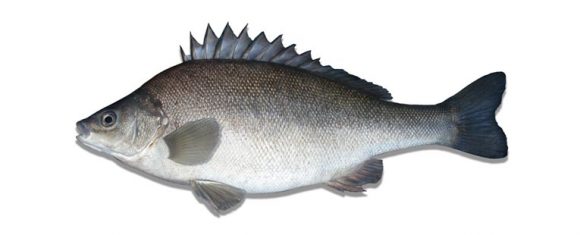Silver Perch

Silver Perch – Bidyanus bidyanus – are naturally found throughout the Murray Darling drainage division of New South Wales and Southern Queensland. They have also been introduced and stocked into the Fitzroy and Burnett River systems as well as other South-East Queensland catchments.
They occur in a wide range of habitats, but prefer fast flowing clear waters, especially where there are rapids and runs. Feeding occurs in the vicinity of eddies, where they can be seen breaking the surface like trout in search of insects. However, they also adapt well to most impoundment conditions.
In colour the Silver Perch is olive-brown above, passing into silvery below, their scales are outlined with darker margins. This fish is known to attain a weight of 8kg, but is more commonly seen at a length of 300 – 400mm and a weight of 0.5 – 1.5kg. They are commonly captured in impoundments at around 1.5 – 2.5kg. The legal Limit for this species is 30cm and currently there is a bag limit of 5.
Spawning occurs at the surface during warm months during flood events. A mature female may shed approximately 500,000 eggs that are semi-buoyant. After one or two days of being carried in flood-water they develop into a free swimming larval stage.
Stocking
Hatchery reared Silver Perch fingerling’s are readily available and this has allowed the restocking and introduction of this species into may Queensland impoundments and weirs. In impoundment conditions they can reach 300mm in 15 – 18 months.
Silver Perch has proved to be very successful stocking for farm dams.
Angling
The Silver Perch is an omnivore and has a varied diet of small aquatic insects, molluscs, earthworms and plant material. Although readily captured at legal size, there is a common misconception that larger fish tend to be more herbivorous in their diet and are hence captured less often.
Due to its feeding habits this fish will readily rise to a fly or lure. It can be also captured using baits of worms and shrimps. The Silver Perch is regarded as an extremely hard-fighting fish – pound for pound at least equal to Bass or Golden Perch with many anglers taking the view that is far superior. Large numbers of this species can be taken during summer when they are moving upstream to spawn.
The edible qualities of this fish are rated quite well with white flaky fillets – but not to be compared with Golden Perch for flavour. The flesh is well suited to chilling and smoking.
